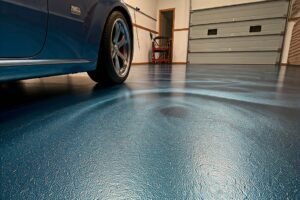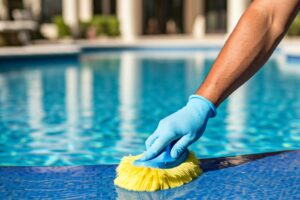Tennis court resurfacing is a vital maintenance process that restores the court’s appearance, performance, and safety. Over time, weather conditions, heavy usage, and aging materials can cause cracks, discoloration, and surface wear. Without regular resurfacing, these issues can worsen, leading to costly repairs or complete court replacement.
This comprehensive guide will walk you through the importance of tennis court resurfacing, how it works, the costs involved, and how to select the best contractors for the job.
Why Tennis Court Resurfacing Matters
Resurfacing your tennis court is about more than just aesthetics; it’s about safety, performance, and protecting your investment. Here’s why it’s crucial:
Restores a Smooth Playing Surface
Cracks, dips, and rough patches can cause uneven ball bounce and disrupt gameplay. Resurfacing corrects these issues, ensuring a consistent, smooth playing experience.
Enhances Player Safety
A worn-out court with cracks and slippery spots increases the risk of injuries. Resurfacing eliminates hazards, providing a safer surface with proper traction.
Improves Ball Bounce & Playability
A well-maintained surface delivers reliable ball bounce and consistent play, which is essential for both casual players and professionals.
Protects Against Weather Damage
Sealing the surface with high-quality coatings prevents water infiltration, which can cause cracks and damage the court’s foundation.
Extends the Lifespan of Your Tennis Court
Regular resurfacing every 4–8 years can significantly prolong your court’s life, saving you from expensive reconstructions.
💡 A well-maintained court ensures better performance and reduces costly long-term repairs!
Signs Your Tennis Court Needs Resurfacing
Recognizing early signs of damage can prevent further deterioration. Here are the most common indicators that it’s time to resurface your tennis court:
Visible Cracks & Surface Wear
Cracks are not just cosmetic issues—they signal that the surface is breaking down. Without repair, cracks can widen and damage the sub-base.
Uneven or Low Spots (Birdbaths) Collecting Water
Puddles that remain hours after rainfall indicate low spots. These “birdbaths” can cause water damage and create slip hazards.
Faded, Peeling, or Slippery Surface
UV rays, moisture, and wear from foot traffic can fade colors and cause the surface coating to peel. This reduces traction and playability.
Poor Traction Affecting Gameplay
A worn-out surface becomes slippery, especially during wet conditions. This increases the risk of player injuries.
Mold, Algae, or Discoloration
Moisture build-up can lead to mold and algae growth, creating a slippery and unsightly surface.
🛠️ If your court has any of these issues, it’s time for resurfacing!
Tennis Court Resurfacing Process: Step-by-Step
Tennis court resurfacing is a detailed process that requires precision to restore the court’s quality. Here’s what the process typically involves:
| Step | Description |
| 1. Surface Cleaning | Power washing to remove dirt, debris, and mold. |
| 2. Crack Repair | Filling and sealing surface cracks to prevent further damage. |
| 3. Leveling & Smoothing | Fixing low spots (birdbaths) with patching material. |
| 4. Acrylic Resurfacer Application | Restoring texture and slip resistance with a specialized coating. |
| 5. Color Coating & Line Marking | Applying new color coatings and precise line markings for gameplay. |
💡 Most courts need resurfacing every 4-8 years, depending on use and climate.
Choosing the Right Tennis Court Resurfacing Company
Selecting a reliable contractor is crucial for quality results and long-lasting performance. Here’s what to look for when hiring a tennis court resurfacing company:
Licensed & Experienced Contractors
Ensure the company is licensed, insured, and has experience resurfacing various types of courts (e.g., hard courts, clay courts, synthetic grass).
Positive Customer Reviews & Testimonials
Look for feedback from past clients to gauge the company’s reputation. Platforms like Google Reviews, Yelp, and industry-specific directories are valuable resources.
Use of High-Quality Materials
The company should use premium materials such as acrylic-based coatings, cushioned systems, and UV-resistant sealers.
Competitive Pricing & Warranties
Get multiple quotes and compare prices. Make sure the contractor offers warranties on their work, typically ranging from 3 to 5 years.
💡 A professional contractor ensures quality resurfacing that lasts for years!
Tennis Court Resurfacing Cost Breakdown
The cost of resurfacing varies depending on the court type, materials used, and surface condition. Here’s a breakdown of average costs:
| Surface Type | Resurfacing Cost per Sq. Ft. | Average Cost for Full Court |
| Hard Court | $4 – $8 | $8,000 – $16,000 |
| Clay Court | $5 – $10 | $10,000 – $20,000 |
| Synthetic Grass Court | $6 – $12 | $12,000 – $24,000 |
💡 Factors Affecting Cost:
- Surface Condition: Courts with extensive cracks or low spots cost more to repair.
- Surface Type: Clay and synthetic grass courts often have higher maintenance costs.
- Materials: High-quality acrylic coatings and cushioned systems increase costs but last longer.
- Location: Regional labor rates and material availability can influence pricing.
Tennis Court Maintenance Tips to Extend Resurfacing Life
After resurfacing, proper maintenance is key to keeping your tennis court in prime condition:
Regular Cleaning
- Sweep or blow leaves, dirt, and debris off the surface.
- Pressure wash the court periodically to remove dirt and stains.
Preventative Measures
- Fix small cracks immediately to prevent further damage.
- Use a court cover when the court is not in use to reduce weather impact.
Resealing & Coating
- Apply a fresh layer of acrylic resurfacer every 4-8 years.
- Use a UV-resistant color coating to prevent fading.
Avoid Harmful Activities
- Restrict skateboarding or other activities that can damage the surface.
- Prohibit heavy equipment from being placed on the court.
Benefits of Regular Tennis Court Resurfacing
🔹 1. Cost Savings in the Long Run
Proactive resurfacing prevents costly repairs or full reconstruction.
🔹 2. Enhanced Safety
A resurfaced court reduces the risk of player injuries from cracks or slippery surfaces.
🔹 3. Improved Aesthetics
A freshly resurfaced court with vibrant colors boosts the visual appeal of your property.
🔹 4. Increased Property Value
A well-maintained tennis court is a valuable asset for residential and commercial properties.
🔹 5. Consistent Gameplay
A smooth surface ensures proper ball bounce and traction for optimal play.
Get Professional Tennis Court Resurfacing Today!
🎾 Ready to restore and protect your tennis court?
✅ Contact a trusted resurfacing company to get a free estimate and enjoy a flawless court built to last!
Frequently Asked Questions (FAQs)
Q: What is tennis court resurfacing?
A: Tennis court resurfacing is the process of repairing cracks, smoothing the surface, and applying new acrylic coatings to restore the court’s appearance and playability.
Q: What is the cheapest way to resurface a tennis court?
A: The most budget-friendly method is to address minor repairs early, such as crack filling and patching, then apply a standard acrylic coating without custom colors or cushioned layers.
Q: What coating is used on tennis courts?
A: Acrylic-based coatings are the most commonly used for tennis courts due to their durability, slip resistance, and vibrant color options.
Q: How do you repair a tennis court surface?
A: Repair involves cleaning the surface, filling cracks with a specialized compound, leveling low spots, and reapplying acrylic resurfacer and color coatings.
Q: How do you restore an old tennis court?
A: Restoring an old tennis court requires a detailed assessment, crack repair, leveling, acrylic resurfacing, and repainting lines. For severely damaged courts, reconstruction may be necessary.
Tennis court resurfacing is essential for maintaining performance, safety, and aesthetics. Regular resurfacing every 4–8 years can prevent major issues, extend the lifespan of your court, and save you money in the long run. Whether you have a hard, clay, or synthetic grass court, hiring experienced resurfacing contractors ensures a high-quality finish that lasts for years.
Don’t wait until minor cracks become major problems—get a free quote from a professional tennis court resurfacing company today!







Leave a Reply
Your email is safe with us.